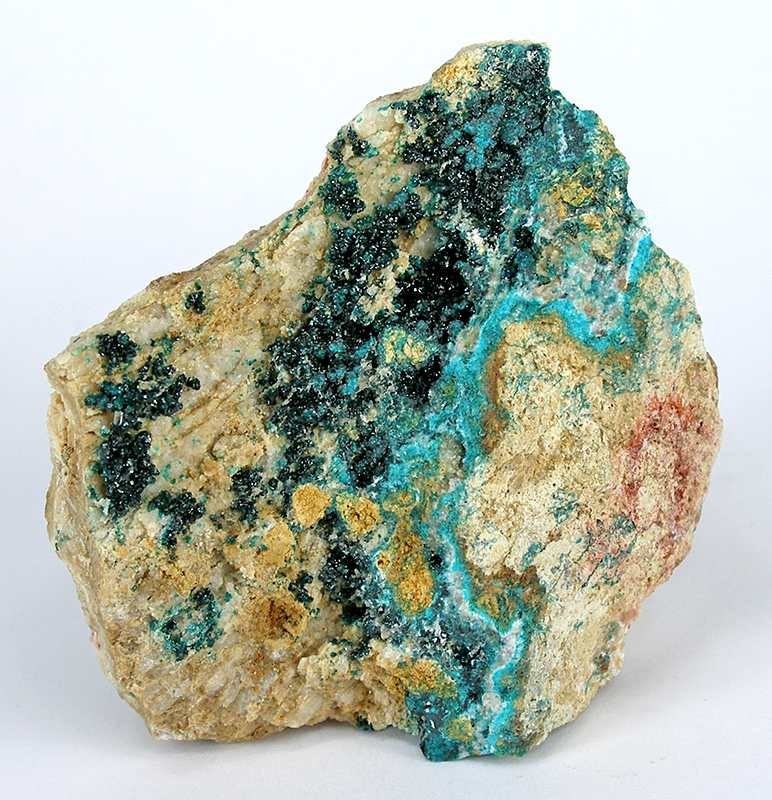
A friend of mine on Google+ who goes by the name of ca314159 gave me a small piece of rock. It's a mineral called herbertsmithite. It's amazing.
Why? Because the electrons in this material form a quantum spin liquid!
Let me tell you what that is.
Atoms in crystals often have a lone unpaired electron whose spin isn't canceled by another pointing the other way.
In a ferromagnet like iron, these spins try to line up. In an antiferromagnet they like to point the opposite way from their neighbors.
But suppose the atoms in your crystal don't form a simple square pattern. Suppose they form layers patterned like this Japanese basket!
Physicists call this a 'kagome lattice', after the Japanese weaving pattern. Mathematicians call it a 'trihexagonal tiling'.
Now things get tricky when the electron spins want to point the opposite way from their neighbor.
The spin shown in red can't be opposite to both the spins in black! Physicists call this 'frustration'.
So, in an antiferromagnetic kagome lattice, the electron spins can't settle down to one 'best' state. Instead, they easily move between lots of 'best possible, but not-so-good' states. Here's one:
This is called a quantum spin liquid.
The Nobel prize winning physicist Philip Anderson dreamt up the idea of quantum spin liquids in 1973, before they'd actually been seen.
The mineral herbertsmithite was discovered in 1972. But only in 2012 was it proved to give a quantum spin liquid!
For the full story of how people created perfect herbertsmithite crystals and showed they give a quantum spin liquid, go here:
I got lots of my pictures from here.
But there are still big puzzles left!
'Gauge theories' describe the basic forces in nature, but they also show up here. Some experiments suggest herbertsmithite is described by a gauge theory with gauge group \(\mathrm{U}(1)\). But others suggest the gauge group is \(\mathbb{Z}/2\).
The math here is fascinating! Math meets rock.
For more, read this:
\(22/7\) is a famous approximation of pi. Pi is \(3.14159\dots\) while \(22/7 = 3.142857\dots,\) and if you know this, \(22/7\) is obviously bigger. But above is a cute proof that \(22/7\) is bigger that doesn't require you to compute any digits of \(\pi\). Nobody seems sure who found this proof.
The integral that gives \(22/7 - \pi\) is surprisingly elegant, and it's clearly positive since you're integrating a positive function. With a little extra work you can use the same idea to get good upper and lower bounds for \(\pi\):
\(355/113\) is a much better approximation to \(\pi\). It's much harder to get a similar integral that shows \(355/113\) is bigger than \(\pi\): $$ 0 \lt \int_0^1\frac{x^8\left(1-x\right)^8\left(25+816x^2\right)}{3164\left(1+x^2\right)}\,dx=\frac{355}{113}-\pi. $$ This was done by Stephen Lucas here: